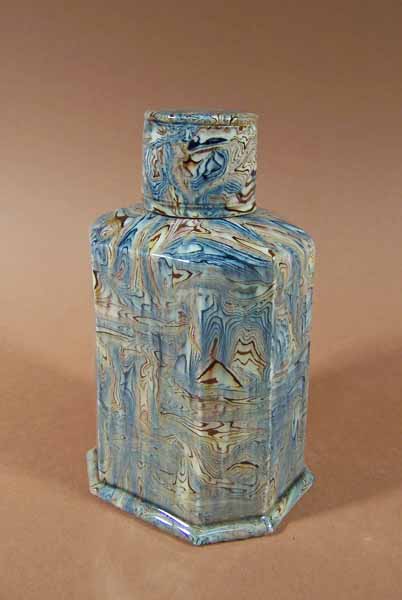tea caddy
Summary
Public: Tall octagonal tea caddy with cylindrical neck and cover, blue, brown and white agate earthenware. Private: Tall rectangular tea caddy with chamfered corners to give elongated octagonal shape, with narrow moulding around foot, flattened shoulder and narrow cylindrical neck. Deep cylindrical cover with fine turned bands around sides at top and bottom. Finely marbled blue, dark brown, light brown and white earthenware body, marbled clays laid in strips giving even marbled pattern, blue and brown bleeding into lead glaze.
Display Label
Agateware tea canister 1750-60 Staffordshire The angular shape of this press moulded canister copies earlier examples made in sheet silver. Agateware is a technique for imitating the random stripes and swirls of colour in agate, a semi-precious stone. This decorative effect for ceramics became very fashionable in the 1730s. Agateware is created by layering and then kneading two or more contrasting colours of clay together. In the 1730s, naturally coloured clays from different sources were used. By the 1750s, metallic oxides were used to colour white clay from a common source. Thomas Tylston Greg bequest 1923.613
Object Name
tea caddy
Date Created
c 1750=1760
Dimensions
without cover: 12.2cm
with cover: 13.6cm
accession number
1923.613
Collection Group
Place of creation
Staffordshire
Medium
On Display
Manchester Art Gallery - Gallery 19 (Design Gallery) - case 1 - TEMPORARILY CLOSED
View all
Credit
Bequeathed by Thomas Tylston Greg
Legal
© Manchester Art Gallery

